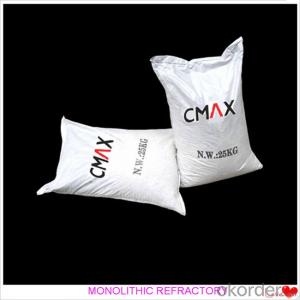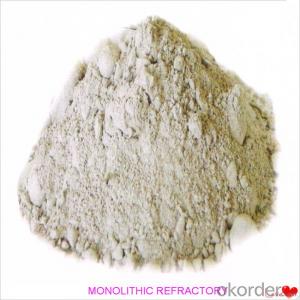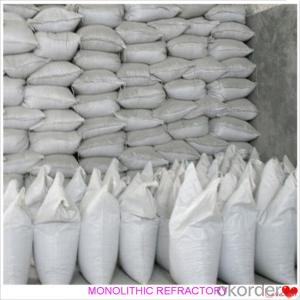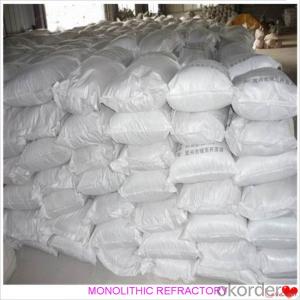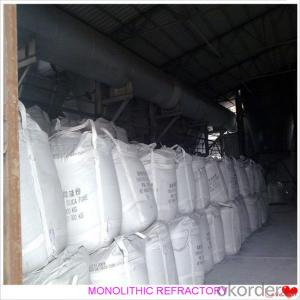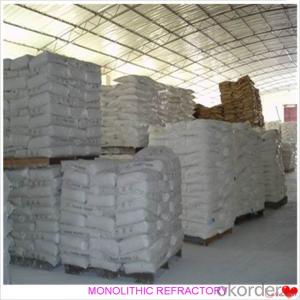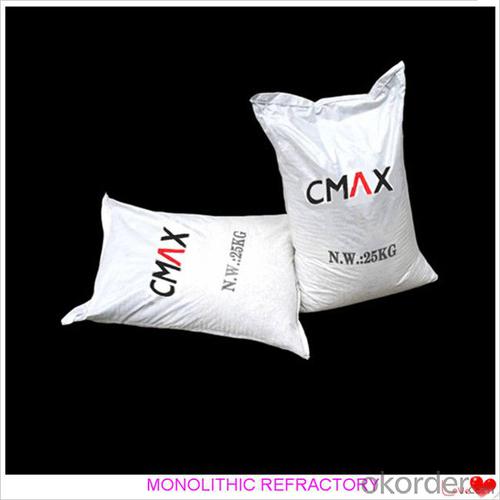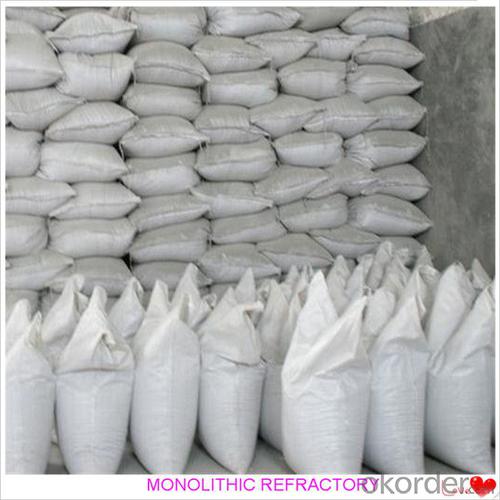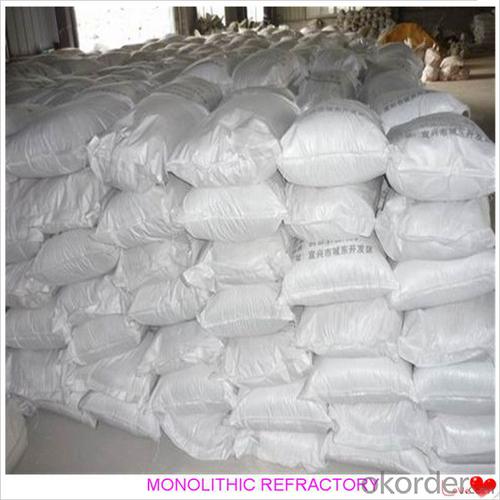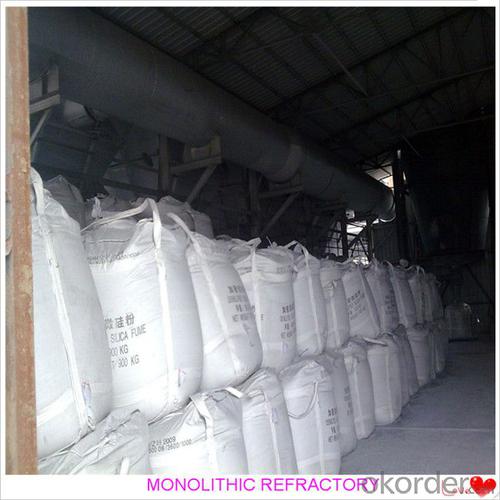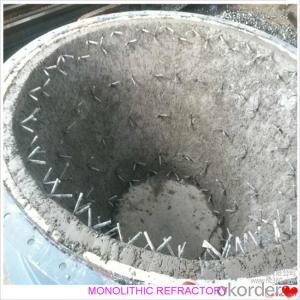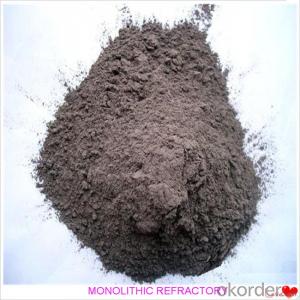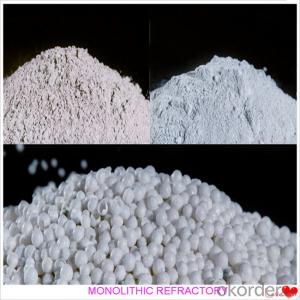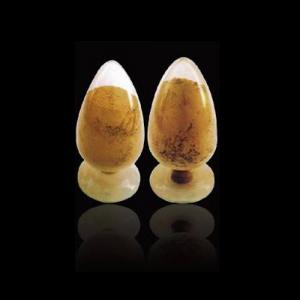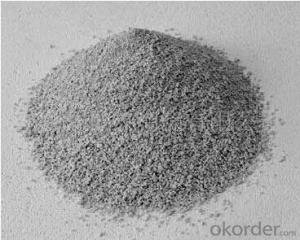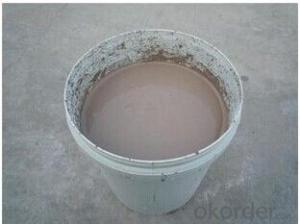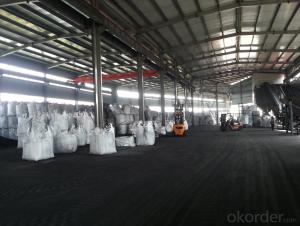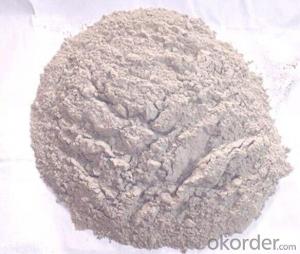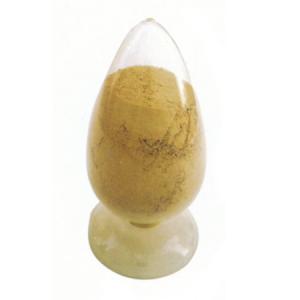Monolithic Refractories for Iron and Steel Industry - Mullite Castable for Fireside and Industrial Furnace
- Loading Port:
- China main port
- Payment Terms:
- TT OR LC
- Min Order Qty:
- 1000 kg
- Supply Capability:
- 3000000 kg/month
OKorder Service Pledge
OKorder Financial Service
You Might Also Like
Mullite Castable For Fireplace and Industrial Furnace in Iron and Steel
Product Description:
Mullite castable is manufactured according to international standards. The product is famous for its excellent abrasion resistance and low thermal conductivity. Further, these can be provided in different specifications as required by the clients. The Mullite castables are used high purity raw materials and additives as the main material, and made of under superfine powder adding technology.
Product Advantages:
The material has excellent structural stability and air tightness, and has high physical and chemical properties, also has a fine working ability.They should be used with the same material products.
Product Applications:
For feature of Mullite castable, they have excellent abrasion resistance, thermal shock resistance, high-temperature resistance, anti-corrode and have high intensity.
Designed for refractory lining of blast furnace iron and slag runners, skimmers and soon
They can be used in troughs of small and mid size BFs and in all positions of the troughs where fast tapping is required.
Product Specifications:
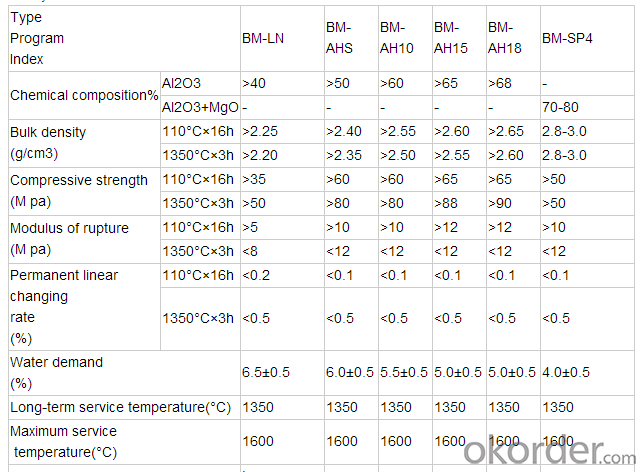
FAQ:
1. How you can control your quality?
For each production processing, we have complete QC system for the chemical composition
and Physical properties. After production, all the goods will be tested, and the quality certificate
will be shipped along with goods.
2. What's your delivery time?
It usually needs about 20days- 45 days after receiving the deposit.
3. Do you provide free samples?
Yes, we can provide a free sample for testing, If we have sample in stock,
The quantity based on the material type, The buyer should bear all the shipping costs.
4. What's your payment terms?
We can accept 30% deposit, 70% balance before shipment for ordrs over $ 2000.
5. Can we visit your Company?
Yes, certainly. You are very welcome to China and we will be honored to have a customer and friend.
Product Picture:
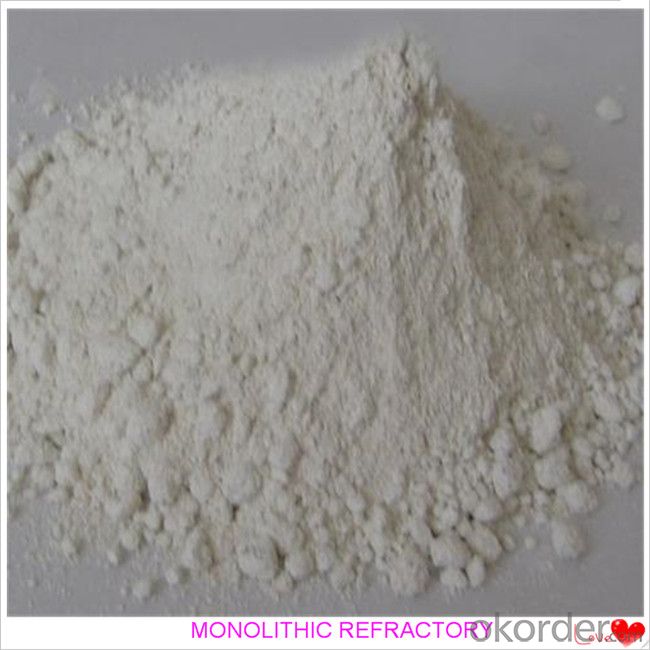
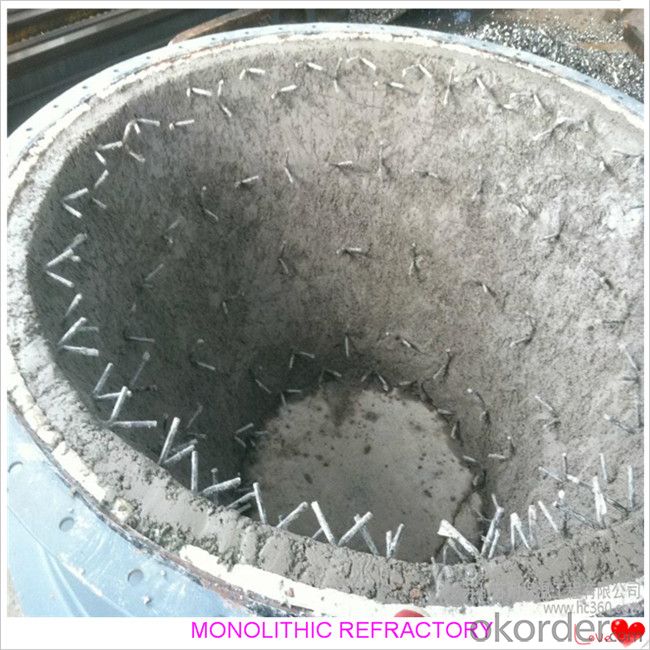
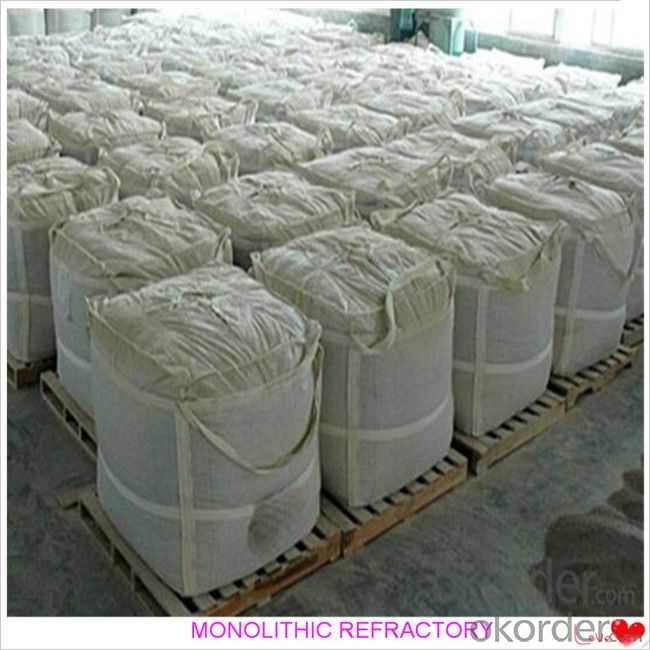
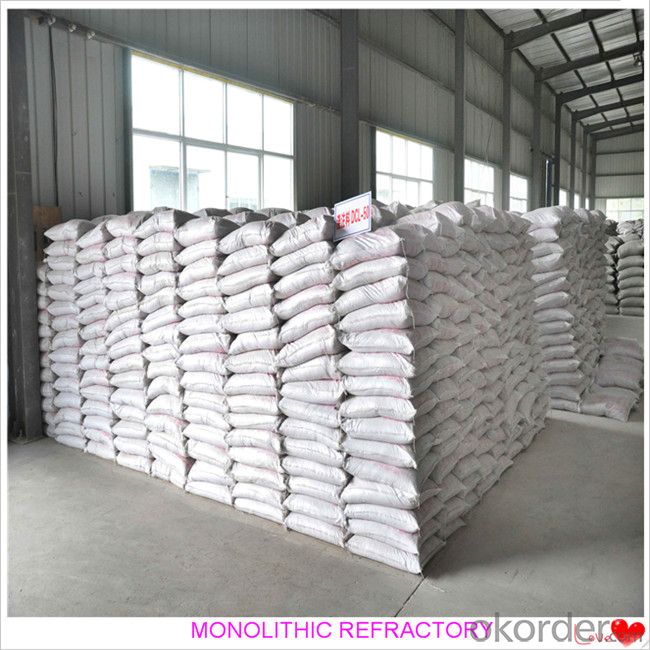
- Q: What are the typical operating temperatures for monolithic refractories?
- The typical operating temperatures for monolithic refractories vary depending on the specific composition and type of refractory material. However, in general, monolithic refractories are designed to withstand high temperatures ranging from 1500°C (2732°F) to 1800°C (3272°F) and even higher in some cases. These refractories are commonly used in industries such as steelmaking, cement production, glass manufacturing, and petrochemical processing, where they are subjected to extreme thermal conditions. Different types of monolithic refractories have different temperature limits. For instance, basic refractories made of magnesia or dolomite can withstand temperatures up to 1800°C (3272°F). On the other hand, alumina-based refractories can typically handle temperatures up to 1700°C (3092°F). Silicon carbide-based refractories have even higher temperature resistance, with the ability to withstand temperatures above 2000°C (3632°F). It is crucial to select the appropriate monolithic refractory material based on the specific operating temperature requirements of the application. Using refractories beyond their recommended temperature limits can cause thermal shock, spalling, or reduced performance, leading to potential equipment failure or safety hazards. Therefore, consulting with refractory manufacturers or experts in the field is essential to ensure the correct selection and optimal performance of monolithic refractories in high-temperature applications.
- Q: How do monolithic refractories improve the efficiency of ladle and tundish preheating furnaces?
- Monolithic refractories improve the efficiency of ladle and tundish preheating furnaces by providing superior insulation and heat retention properties. These refractories are designed to withstand high temperatures and reduce heat loss, ensuring that the furnaces reach and maintain the desired preheating temperatures more efficiently. Additionally, monolithic refractories offer excellent thermal shock resistance, preventing cracks and damage that can negatively impact furnace performance. Overall, the use of monolithic refractories in ladle and tundish preheating furnaces helps to optimize energy consumption and enhance the overall efficiency of the preheating process.
- Q: How do monolithic refractories contribute to energy efficiency in the iron and steel industry?
- Monolithic refractories play a crucial role in improving energy efficiency in the iron and steel industry. These refractories are made from a single material and can be easily molded, thereby providing a seamless lining in various high-temperature applications, such as furnaces and kilns. By having a monolithic lining, heat loss is significantly minimized as there are no joints or gaps for heat to escape. This leads to reduced energy consumption and improved overall energy efficiency in the industry. Additionally, monolithic refractories offer better thermal conductivity and insulation properties, enabling better heat transfer and retention within the equipment, further optimizing energy usage.
- Q: How do monolithic refractories improve the performance and efficiency of iron and steel production?
- Monolithic refractories play a crucial role in improving the performance and efficiency of iron and steel production. These specialized materials are designed to withstand extreme temperatures, chemical reactions, and mechanical stresses, making them ideal for use in high-temperature industrial processes. One of the key ways in which monolithic refractories enhance performance is by providing a protective lining in furnaces, kilns, and other equipment used in iron and steel production. Due to their superior heat resistance, they protect the underlying structure from the intense heat and prevent any detrimental effects on the equipment. This results in reduced downtime, longer service life, and ultimately, increased overall efficiency. Monolithic refractories also ensure better thermal efficiency in the production process. By minimizing heat losses, these materials help to maintain a stable and uniform temperature distribution, thereby improving the energy efficiency of the system. This is particularly important in iron and steel production, where precise temperature control is crucial for achieving the desired metallurgical properties of the final product. Furthermore, monolithic refractories offer excellent resistance to chemical corrosion, erosion, and slag attacks. They act as a barrier between the molten metal and the refractory lining, preventing undesirable reactions and material degradation. This helps to maintain the integrity of the furnace lining, reducing the need for frequent repairs or replacements. Consequently, it leads to increased productivity and cost savings in the long run. Another advantage of monolithic refractories is their ability to be easily shaped, repaired, or replaced. Unlike traditional brick refractories, which require extensive labor and time-consuming installation, monolithic refractories can be applied in a more flexible and efficient manner. Their flexible nature allows for easy repair of damaged areas, minimizing downtime and ensuring continuous production. In summary, the use of monolithic refractories significantly enhances the performance and efficiency of iron and steel production. These materials provide a protective lining, improve thermal efficiency, resist chemical corrosion, and offer easy installation and repair options. By optimizing the production process, monolithic refractories contribute to higher productivity, reduced downtime, and increased cost-effectiveness in the iron and steel industry.
- Q: How do monolithic refractories contribute to the quality of iron and steel products?
- Enhancing the quality of iron and steel products is a crucial role played by monolithic refractories. These refractories consist of a single, solid structure that grants them high resistance against thermal and mechanical stresses. Their unique properties make them suitable for a range of high-temperature applications in the iron and steel industry. To start with, monolithic refractories excel in thermal insulation, maintaining a consistent temperature within furnaces and kilns. This temperature stability is vital for the proper heat treatment of iron and steel, ensuring ideal metallurgical properties and reducing the risk of defects. By preventing heat loss, monolithic refractories promote efficient energy utilization, resulting in cost savings and environmental benefits. In addition, monolithic refractories demonstrate remarkable endurance in the face of harsh operating conditions. The iron and steel manufacturing process involves extreme temperatures, aggressive chemical environments, and mechanical stresses. Monolithic refractories exhibit exceptional resistance to these conditions, ensuring durability and longevity. Their ability to resist thermal shock prevents cracking or spalling, which can lead to contamination and compromised product quality. Furthermore, monolithic refractories provide excellent corrosion resistance, shielding iron and steel products from chemical reactions with molten metal, slag, and other aggressive substances. This resistance not only preserves the integrity of the refractory lining but also prevents contamination of the metal, resulting in improved product quality. Monolithic refractories also offer flexibility in design and installation. They can be shaped, cast, or gunned into various complex geometries, allowing for customization based on the specific requirements of the iron and steel production process. This versatility ensures optimal lining performance, maximizing efficiency and product quality. In conclusion, monolithic refractories significantly contribute to the quality of iron and steel products. Their thermal insulation properties, resistance to harsh operating conditions, corrosion resistance, and design flexibility all play a vital role. By providing a reliable and durable lining in high-temperature applications, monolithic refractories help guarantee consistent and high-quality output in the iron and steel industry.
- Q: How do monolithic refractories contribute to the overall efficiency of ladle cleaning operations?
- Monolithic refractories contribute to the overall efficiency of ladle cleaning operations by providing a durable and heat-resistant lining that can withstand high temperatures and chemical reactions. This lining helps to prevent the erosion and corrosion of the ladle, ensuring its longevity and reducing the need for frequent repairs or replacement. Additionally, monolithic refractories offer excellent thermal insulation, which helps to maintain the desired temperature of the ladle's contents and minimize heat loss. This ultimately improves the ladle's efficiency and reduces energy consumption during ladle cleaning operations.
- Q: How do monolithic refractories withstand the mechanical impacts in ladle lip applications?
- Monolithic refractories are able to withstand the mechanical impacts in ladle lip applications due to their unique properties and composition. Firstly, monolithic refractories are made from a single, homogenous material, which provides them with a high level of structural integrity. This means that they are less vulnerable to cracking or breaking when subjected to mechanical impacts. Additionally, monolithic refractories often contain additives such as fibers or aggregates, which further enhance their resistance to mechanical stresses. These additives help to distribute the forces applied to the refractory material, reducing the concentration of stress points and increasing its overall durability. Furthermore, the application process of monolithic refractories allows for a seamless and continuous lining, eliminating the presence of joints or weak points that are susceptible to mechanical damage. This ensures a more uniform distribution of the impacts and enhances the material's ability to withstand them. Moreover, monolithic refractories can be designed with specific compositions and formulations that are tailored to resist mechanical impacts. Various binders and additives can be incorporated to enhance the material's toughness, impact resistance, and overall mechanical strength. Finally, the selection of monolithic refractories for ladle lip applications also takes into consideration the operating conditions, such as temperature and chemical exposure. By choosing refractories that are suitable for these conditions, their mechanical properties can be optimized to withstand the specific challenges posed by ladle lip applications. In summary, monolithic refractories are able to withstand mechanical impacts in ladle lip applications due to their homogenous structure, the inclusion of additives, the seamless application process, and the ability to customize their composition. These factors contribute to their ability to resist cracking, breaking, and other forms of mechanical damage, ensuring their longevity and effectiveness in ladle lip applications.
- Q: How are monolithic refractories installed and repaired in iron and steel production facilities?
- Monolithic refractories play a crucial role in iron and steel production facilities by offering insulation and protection against high temperatures, chemical corrosion, and mechanical wear. To install and repair these refractories, careful planning, expertise, and adherence to safety protocols are necessary. To begin installation, the surface must be prepared by eliminating loose material and cleaning the area thoroughly. This step guarantees proper adhesion of the refractory material and may also involve roughening or texturing the surface for better bonding. Next, a workable consistency is achieved by mixing the monolithic refractory material with water or a binder. The material is then applied to the prepared surface using techniques like casting, gunning, ramming, or troweling. The choice of application method depends on factors such as the type of refractory material, repair area, and desired outcome. During installation, it is vital to carefully follow the manufacturer's instructions regarding mixing ratios, curing times, and drying temperatures. Improper installation can result in reduced refractory performance, premature failure, and safety hazards. Repairing monolithic refractories in iron and steel production facilities is an ongoing process due to the harsh operating conditions and mechanical stresses they endure. It is crucial to promptly address any signs of damage or wear to prevent further deterioration. The first step in the repair process is to assess the extent of the damage. This can be achieved through visual inspection, thermal imaging, or non-destructive testing techniques. Once the damage is identified, the appropriate repair method can be determined. Minor repairs can often be accomplished using patching materials that have a composition similar to the original refractory. These materials are mixed with water or a binder to form a paste, which is then applied to the damaged area and allowed to cure. For more extensive repairs, the damaged refractory material may need to be completely removed using mechanical methods like chipping, grinding, or cutting. After removing the damaged material, the surface is prepared as mentioned earlier, and new refractory material is installed using the appropriate application method. It is important to note that the repair process should be carried out by trained personnel with expertise in refractory installation and repair. Safety precautions, such as wearing protective clothing, using proper tools, and following established procedures, should always be observed. In conclusion, the installation and repair of monolithic refractories in iron and steel production facilities necessitate careful planning, adherence to manufacturer's instructions, and expertise in refractory materials. By following proper procedures and promptly addressing any damage, these facilities can ensure the longevity and efficiency of their refractory linings, ultimately contributing to the smooth operation of their production processes.
- Q: What are the typical applications of monolithic refractories in blast furnaces?
- Due to their unique properties and applications, monolithic refractories find extensive use in blast furnaces. These refractories consist of a single, uniform material that can be shaped and installed in various forms without the need for joints or seams. This particular characteristic makes them highly suitable for lining and safeguarding the different zones of a blast furnace. One common use of monolithic refractories in blast furnaces is for lining the hearth, which is the lowermost part of the furnace where molten iron and slag collect. Monolithic refractories are employed to create a sturdy and heat-resistant lining capable of withstanding the extreme temperatures and chemical reactions that occur in this region. Another frequent application is the lining of the bosh, the transitional zone between the hearth and the blast furnace's stack. The bosh is subjected to elevated temperatures and mechanical stresses resulting from the movement of burden materials. To ensure its longevity and efficiency, monolithic refractories with high thermal shock resistance and abrasion resistance are utilized. Monolithic refractories are also utilized for lining the stack and the tuyere area. The stack refers to the vertical portion of the furnace where iron ore reduction takes place, while the tuyere area is where hot air blast is injected into the furnace. Both these areas necessitate refractories capable of withstanding high temperatures, chemical reactions, and mechanical stresses. Moreover, monolithic refractories find application in the repair and maintenance of blast furnaces. Due to the harsh conditions inside the furnace, the lining may deteriorate over time. Monolithic refractories can be easily applied as patching materials to restore the lining's integrity and extend the furnace's lifespan. In summary, monolithic refractories play a crucial role in blast furnaces by lining the hearth, bosh, stack, and tuyere area, as well as facilitating repairs and maintenance. These refractories offer exceptional thermal shock resistance, abrasion resistance, and durability, making them indispensable for the efficient operation of blast furnaces in the iron and steel industry.
- Q: What are the recommended storage and handling practices for monolithic refractories?
- The recommended storage and handling practices for monolithic refractories include storing them in a dry and covered area to prevent moisture absorption, avoiding direct contact with the ground to prevent contamination, and ensuring proper ventilation to prevent condensation. It is important to handle them with care, avoiding dropping or hitting them, and using appropriate lifting equipment when necessary. Additionally, following the manufacturer's guidelines for installation, curing, and drying processes is crucial to ensure optimal performance and longevity of the monolithic refractories.
Send your message to us
Monolithic Refractories for Iron and Steel Industry - Mullite Castable for Fireside and Industrial Furnace
- Loading Port:
- China main port
- Payment Terms:
- TT OR LC
- Min Order Qty:
- 1000 kg
- Supply Capability:
- 3000000 kg/month
OKorder Service Pledge
OKorder Financial Service
Similar products
Hot products
Hot Searches
Related keywords
